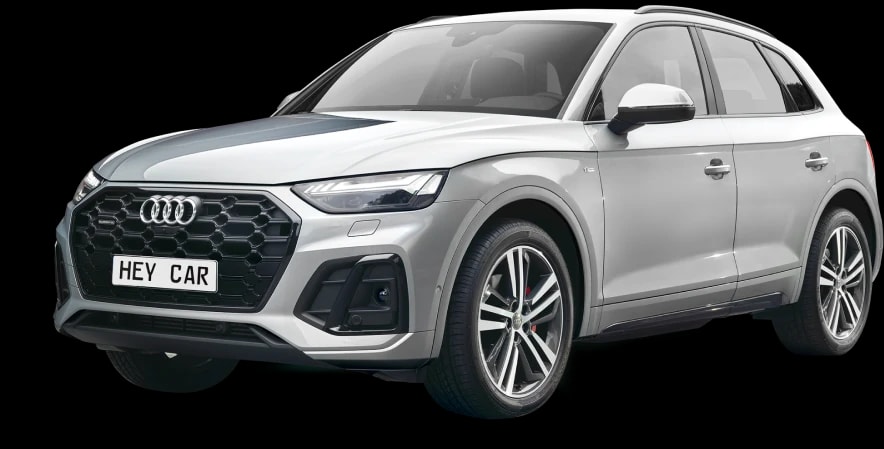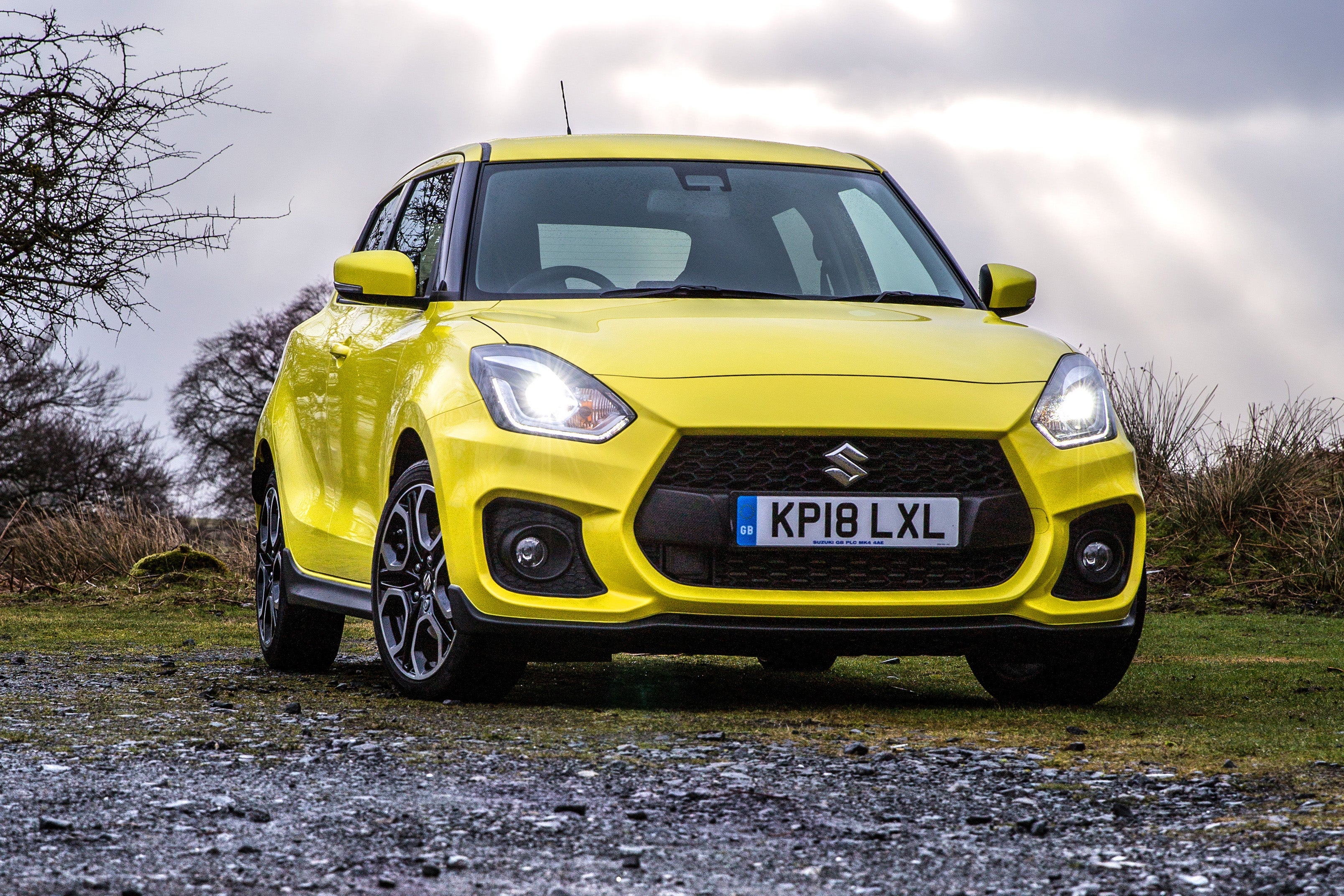Suzuki Swift Sport (2018-2024) Review
Written by Andrew Brady
Quick overview
Pros
- Very well equipped
- Nimble handling
- Low running costs
Cons
- Cheap feeling cabin in places
- Tardy performance
- High speed refinement
Verdict: Is the Suzuki Swift Sport a good car?
"There have been two significant changes for the Suzuki Swift Sport since this generation arrived in 2018. Firstly, the car was launched with a turbo petrol engine, so saying goodbye to the older non-turbo motor that did so much to endear this mildly warm hatch to so many."
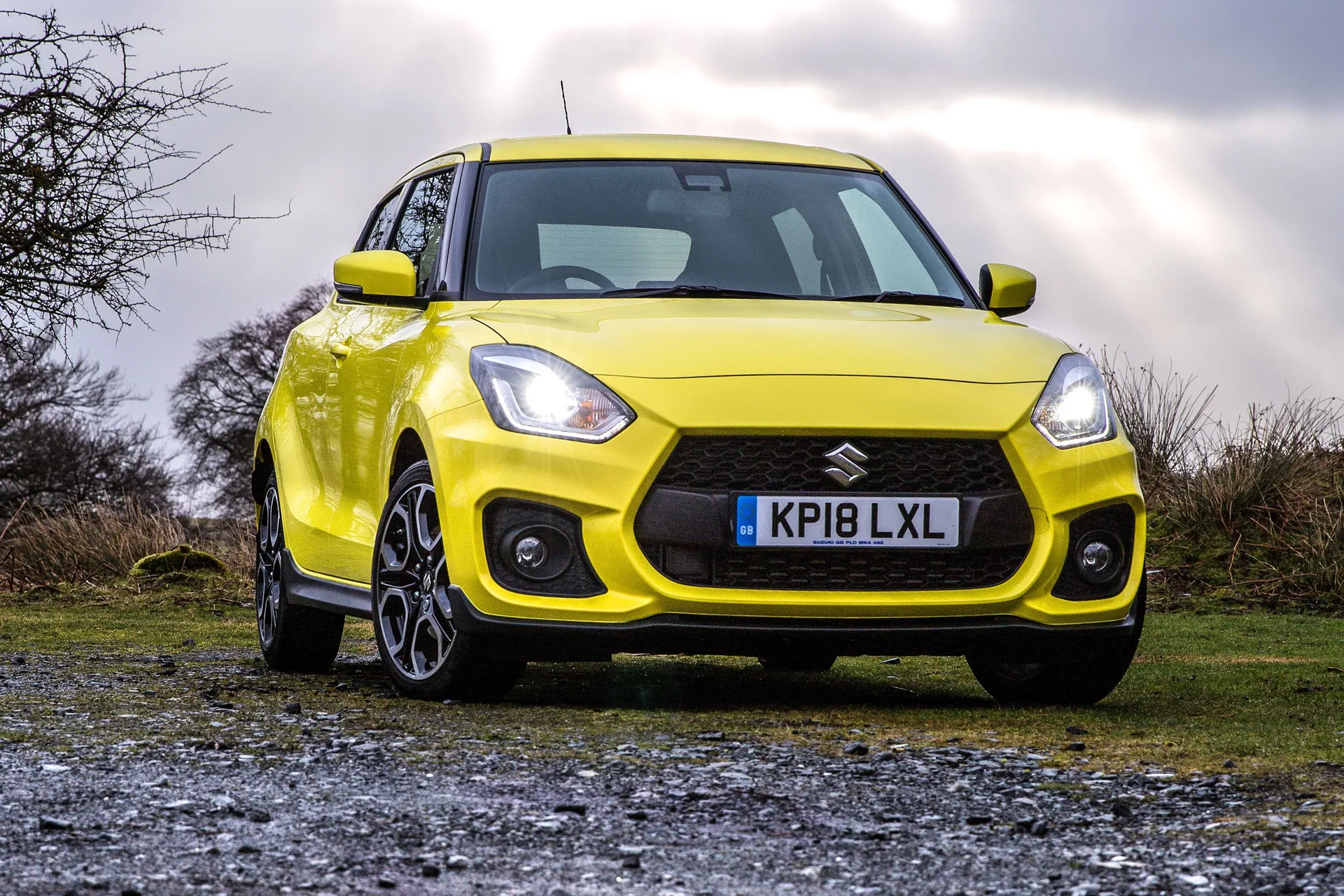
The new engine may have been smaller in capacity, toting 1.4-litres to the previous motor’s 1.6-litre size, but the addition of the turbo boosted power to 140PS.
As a result, the Swift Sport was a much better drive without the need to thrash the engine just to access the power. It was far nicer at everyday speeds too with a less frantic nature and much stronger in-gear acceleration.
On paper, it accelerated from 0-62mph in around 8.1 seconds, not quite hot hatch territory, but did compete alongside 'warm' alternatives like the SEAT Ibiza FR 1.5 TSI Evo and Ford Fiesta ST-Line 1.0 EcoBoost 140.
Then Suzuki got all zeitgeist-y and made the Swift Sport a petrol-electric hybrid. Not a plug-in hybrid or one with an enormous electric motor, just a mild hybrid. Overall, it meant power for the Swift Sport was dropped to 129PS while mid-rev shove increased by a modest 5Nm to 235Nm at 2000rpm.
Fortunately, Suzuki kept the six-speed manual gearbox fitted to the old Sport, but performance suffered and the Swift Sport took 9.1 seconds to get from a standing start to 62mph, while top speed was 130mph.
Suzuki argued the latest Swift Sport had more standard equipment and that it was cleaner and more economical. All of this is undoubtedly, unequivocally true, but it was also factual the far superior Ford Fiesta ST could be had for similar money.
It was also a five-door only model, meaning it was more practical than other small hatchback-derived hot hatches from the same era.
Yet the problem remained on a scale of bang for buck. The Suzuki Swift had gotten worse not better with its later revision. It was hard not to miss the earlier 1.4-litre non-hybrid model for its chirpily uncomplicated approach and appeal.
Looking for a used car for sale? We've got 100s of Suzuki Approved Used Cars for Sale for you to choose from, including a wide range of Suzuki Swift Sport cars for sale.
Is the Suzuki Swift Sport right for you?
Suzuki pulled off good things with the Swift Sport over the years, offering those who want some fun in their daily drive an affordable dose of excitement. The Sport has always majored more on its handling prowess than outright speed, but the addition of the 1.4-litre turbocharged BoosterJet engine at this generation’s launch in 2018 was a good omen.
The Swift Sport had an engine that delivered decent pace at low revs. It pulled well at higher revs too, so the BoosterJet motor was ideal
The Suzuki added mild-hybrid technology, which increased weight, blunted performance and upped the price considerably. It meant the Swift Sport was not painted into a corner against pricier and extremely talented opposition, such as the Ford Fiesta ST, which made it very hard to see why anyone would choose the Suzuki.
What's the best Suzuki Swift Sport model/engine to choose?
Like most hot derivatives of small hatchbacks, the Suzuki Swift Sport was offered with a single engine and trim: a 1.4-litre BoosterJet four-cylinder turbo petrol motor with a six-speed manual gearbox. It had 129PS and 235Nm of low- and mid-rev shove, which was enough for it to sprint from 0-62mph in 9.1 seconds.
All later Swift Sports were five-door models with 17-inch alloy wheels, twin exhausts, rear privacy glass, and the usual array of hot hatch spoilers. You also got handy kit such as all-round parking sensors, adaptive cruise control, and keyless entry and ignition.
The interior offered air conditioning, electric windows all round, a parking camera, and a 7-inch infotainment system with touchscreen and sat-nav.
A fair bit of kit to cram into a small hatch, but then the Swift Sport was pricey when compared to most similar performance rivals.
What other cars are similar to Suzuki Swift Sport?
Rivals included the Volkswagen Up GTI and Abarth 595. Both notably less expensive from new and were more fun to drive than the Sport. Likewise, there are many clean examples on the used market.
The Ford Fiesta ST and Volkswagen Polo GTI were cheaper, much faster and were true hot hatches compared to the Suzuki’s lukewarm hatch status. All of which left the Swift Sport in No Man’s Land rather than its own niche.
Sadly, the Up GTI, 595, and Fiesta ST have since been cancelled. Similarly, Suzuki no longer offer a Swift Sport. The hot hatch market now belongs to the Ford Puma ST, Toyota Yaris GR, Hyundai I20 N and Mini Cooper S.
All of the mentioned stray far from warm hatch territory, but then this category isn't really a thing now. Most modern family cars boast performance figures similar to the Swift Sport.
Comfort and design: Suzuki Swift Sport interior
"The Suzuki Swift Sport wasn't cramped even for six-footers. The Sport got all the essentials right with a good driving position, well positioned pedals and decent all round visibility. This was because of the relatively high sides that allowed for an upright seating position."
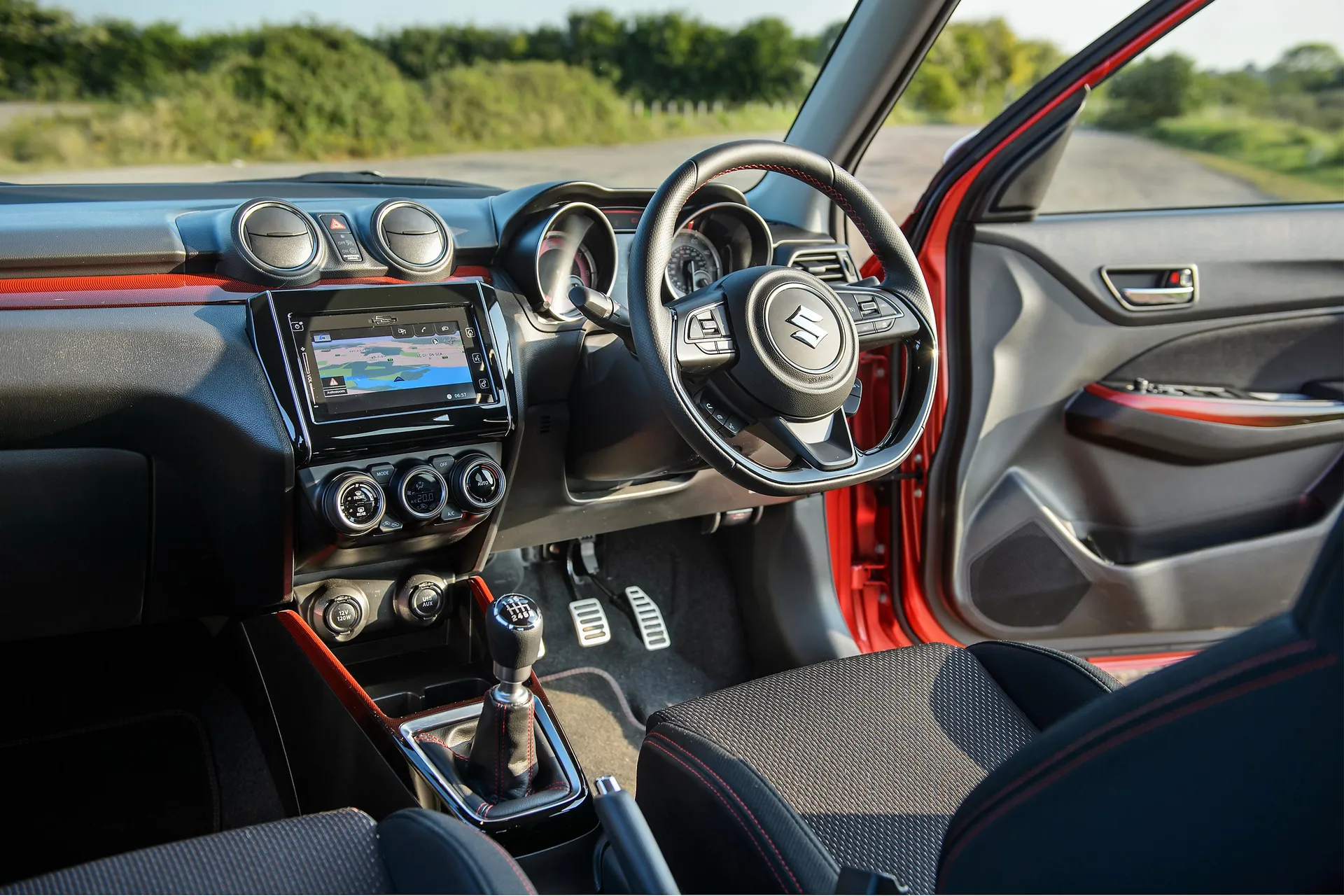
The driver also enjoyed a steering wheel that adjusts for angle but not depth. This could be a serious demerit for the Sport’ driving comfort, but the well padded and bolstered seat avoided this and you had seat height adjustment to help further fine tune position.
It was practical too with large door pockets and two central cupholders although there was no centre armrest and the glovebox felt a little flimsy. The air conditioning was a little reluctant to get cold too and in normal driving could take 20 minutes, which was frustrating on a hot day when stuck in traffic.
Standard kit was impressive and included DAB, navigation plus Apple CarPlay, Android Auto and MirrorLink support.
Quality and finish
Like the standard Suzuki Swift, the cabin of the Sport was functional and well built, but did make do with some hard plastics in places. It didn't feel especially plush or upmarket, but proved durable.
Suzuki added extras to make it stand out. The Sport had red trim on the dash and doors, sportier instrument dials and aluminium pedals. There were also sport seats with more side support and red stitching which extended to the gear lever surround.
In all, it was just enough to lift the Swift Sport’s cabin out of being humdrum, but still missed the lure of a Volkswagen Polo GTI and its superb blend of materials, fabric and finishes. Suzuki also had a strong reputation for making long-lasting cars.
Infotainment: Touchscreen, USB, sat-nav and stereo in the Suzuki Swift Sport
The 7-inch infotainment was well placed and easy to reach from the driver’s seat. Remote buttons on the steering wheel operated the stereo’s volume and phone calls. The sound control was very welcome as the one on the screen was fiddly to use and adjust accurately.
However, the screen’s graphics and interaction both lagged behind what was considered the class norm. The screen was slow to react to inputs and the display looked very dated, especially the sat-nav map which could be difficult to read as it was too fussy and lacked definition. It did come with Bluetooth and USB connection, however.
On the upside, sound quality was decent through the four standard speakers and Suzuki included DAB digital radio with the Swift.
Space and practicality: Suzuki Swift Sport
It had some sporting pretensions, but the Suzuki Swift Sport impressed more with its practical and versatile virtues than it did with any ability to devour country roads. Thanks to the Swift’s styling, the rear occupants mimiced those in the front by sitting upright. With knees and hips set at 90-degree angles, it meant every bit of available space was used.
As a result, the Swift was one of the few small hot hatches that could carry four adults on more than a quick jaunt across town. It even provided good shoulder and elbow room for this kind of escapade, though trying to fit three adults across the back bench was a squeeze too far, even with Suzuki fitting a trio of three-point belts back here. Suzuki also supplied Isofix child seat mounts on both outer rear seats.
Access to the back seats was good through the rear doors. It also made life much easier when loading and unloaded younger kids who use a child seat.
The 265-litre boot was decent enough room for a week's shopping or a pushchair and was certainly an improvement over the previous Swift Sport. With the tailgate opened, the luggage aperture was wide and didn't suffer from intrusion from the rear lights. However, the boot wasn't very long.
The rear seat backs folded down to free more space, but they didn't fold flat and there was a bit step in the cargo floor after tipping them forward.
Handling and ride quality: What is the Suzuki Swift Sport like to drive?
"The Suzuki Swift Sport may have taken a backward step in terms of performance with its transition to hybrid power, but the car remains a delight when you encounter a deserted twisty country road. This is where the Sport is at its very best as you don’t need huge power to have a lot of fun. Instead, you need what the Swift has in abundance and that’s poise."
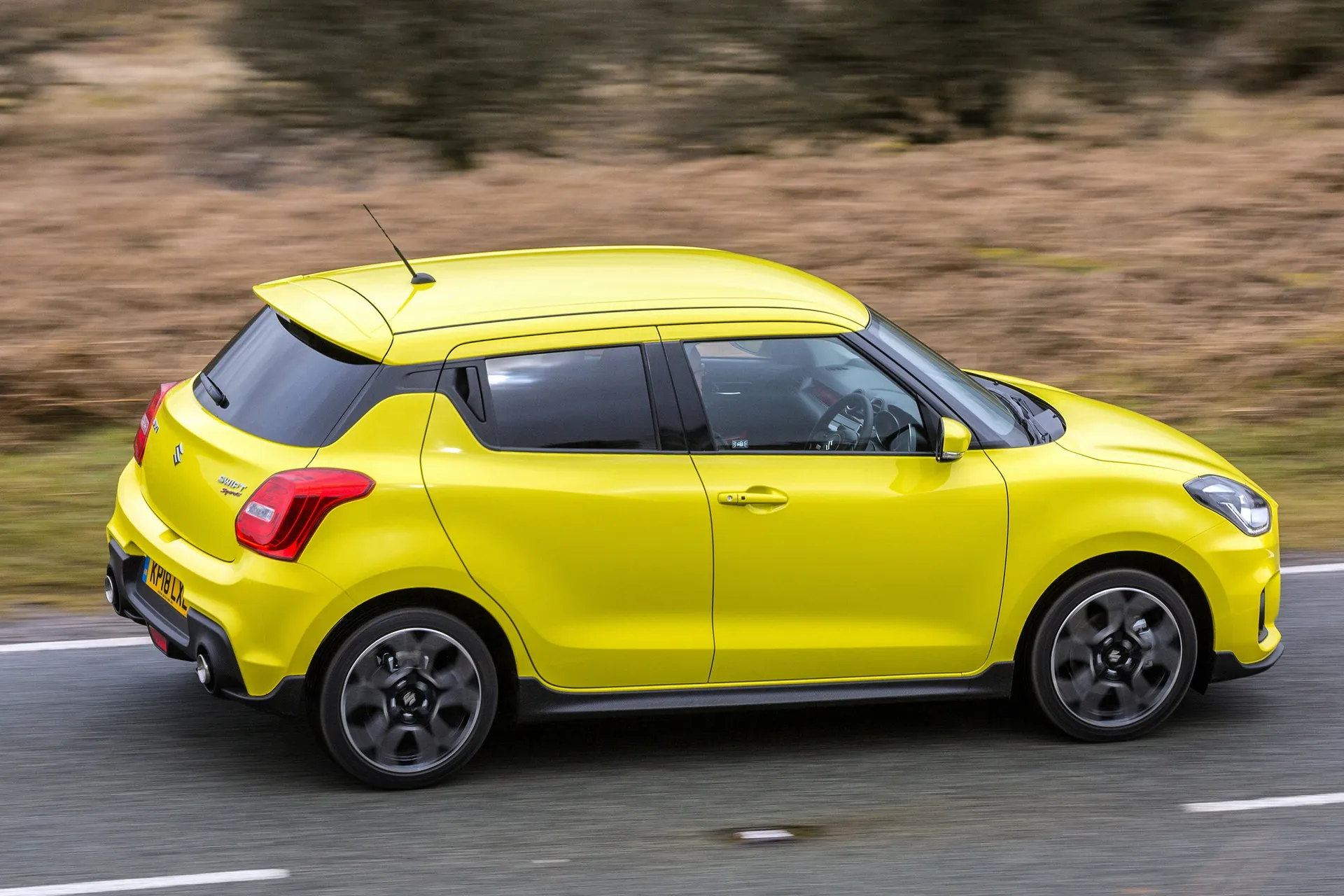
There was good grip from the tyres, and the 17-inch alloy wheels handled potholes well. The Sport flowed with the road in a very contented, controlled manner allowing the driver to make use of available grip.
In some hot hatches where you’re clinging on while navigating bends at warp speed, the Suzuki carried slightly slower pace without needing constant brake dabbing.
Accurate, quick-witted steering with ample feel and sensation aided its poise. The suspension leaned when turning into a corner, but the car settled and happily held its line and attitude.
We also found the Swift Sport’s brakes were very well matched to the car’s weight and performance. They had good bite and allowed the driver to easily modulate how much speed was reduced.
On urban roads, the Swift Sport felt comfortable. It was also easy to park thanks to the upright driving position, compact dimensions and minimal front and rear overhang. You also got parking sensors and a reversing camera to help out.
On the motorway, the Swift was stable and dealt with high-speed bumps as ably as it did everywhere else. Only the occasional side wind could remind you this was a small hatch with tall sides.
What engines and gearboxes are available in the Suzuki Swift Sport?
The Suzuki Swift Sport was powered by a 1.4-litre BoosterJet engine and a small electric motor, which increased low-down shove by 5Nm to 235Nm over the previous petrol-only model. However, outright power dipped from 140PS to 129PS, and weight was up by 15kg due to the hybrid powertrain.
The result meant it was slower than the pre-hybrid version, which seemed a very retrograde step for a car with some hot hatch leanings. Now, the claimed 0-62mph time for the Swift Sport was 9.1 second - a whole second behind the 1.4-litre BoosterJet turbo model.
Still, the hybrid version was much like its predecessor and you didn't have to rev the socks off to get meaningful performance. The low rev urge of 235Nm peaked from just 2000rpm, 500rpm less than before, making power more accessible. The result was strong in-gear performance and decent acceleration away from slow corners.
However, there was no getting away from the fact the Swift Sport was not that quick off the mark by hot hatch standards.
Suzuki shortened the gear lever’s throw by 10% with the hybrid model, addressing one of our few criticisms where the old car’s change was a little notchy. It was odd the rev counter went to 8000rpm when the engine redlined at just over 6000rpm. There was no warning when approaching the limit either, so if you were driving the Sport quickly, you'd often find yourself reaching the rev limiter sooner.
Refinement and noise levels
There was lots of road noise at higher speeds, especially once at motorway pace in the Suzuki Swift Sport. You'd find yourself turning the volume of the stereo up when on a multi-lane road to drown out the wind whistle.
A fair amount of wind noise was generated by the upright windscreen, too, which added to the general hubbub of travelling in the Swift sport at faster speeds. The ride was reasonably comfortable for a sporting hatch, but the dampers were firm and tend to thump motorway expansion joints.
Suzuki did well at keeping it from being too rowdy or making itself heard in the cabin. Ther was a little growl at higher revs, but this wasn't the most exotic or tantalising noise heard from a hot hatch. The exhaust was fairly quiet, too.
The steering, gearbox and pedals all worked with resistance, making it enjoyable to drive.
Safety equipment: How safe is the Suzuki Swift Sport?
The Suzuki Swift Sport was well equipped as standard with plenty of safety gear. It had twin front, side and curtain airbags, as well as three-point belts for all five occupants and Isofix child seat mounts on the two outer rear chairs.
Suzuki also fitted its Dual Sensor Brake Support (the firm’s own version of autonomous emergency braking) to sport possible hazards and apply the brakes if the driver failed to react. Likewise, the Swift Sport had Hill Hold Control and a Blind Spot monitor.
Swift Sport buyers were also treated to Lane Departure Warning as standard, along with Lane Departure Prevention, Weaving Alert and Rear Cross Traffic Alert, notifying you if vehicles were approaching from the side while reversing.
And that’s not all, because you also got traffic sign recognition, all-round parking sensors and a reversing camera. There was more too, with High Beam Assist to prevent dazzling oncoming drivers, a tyre pressure monitoring system, and ESP traction and stability control.
However, the Swift Sport did without a space saver or full-size spare wheel and, instead, made do with a puncture repair sealant kit.
MPG and fuel costs: What does a Suzuki Swift Sport cost to run?
"The Suzuki Swift Sport with its mild hybrid petrol-electric set-up wasn't a wild performer, but offered 50.1mpg combined economy under WLTP testing. This meant it could cover up to a little more than 400 miles of mixed driving from full to the fuel warning light blinking."
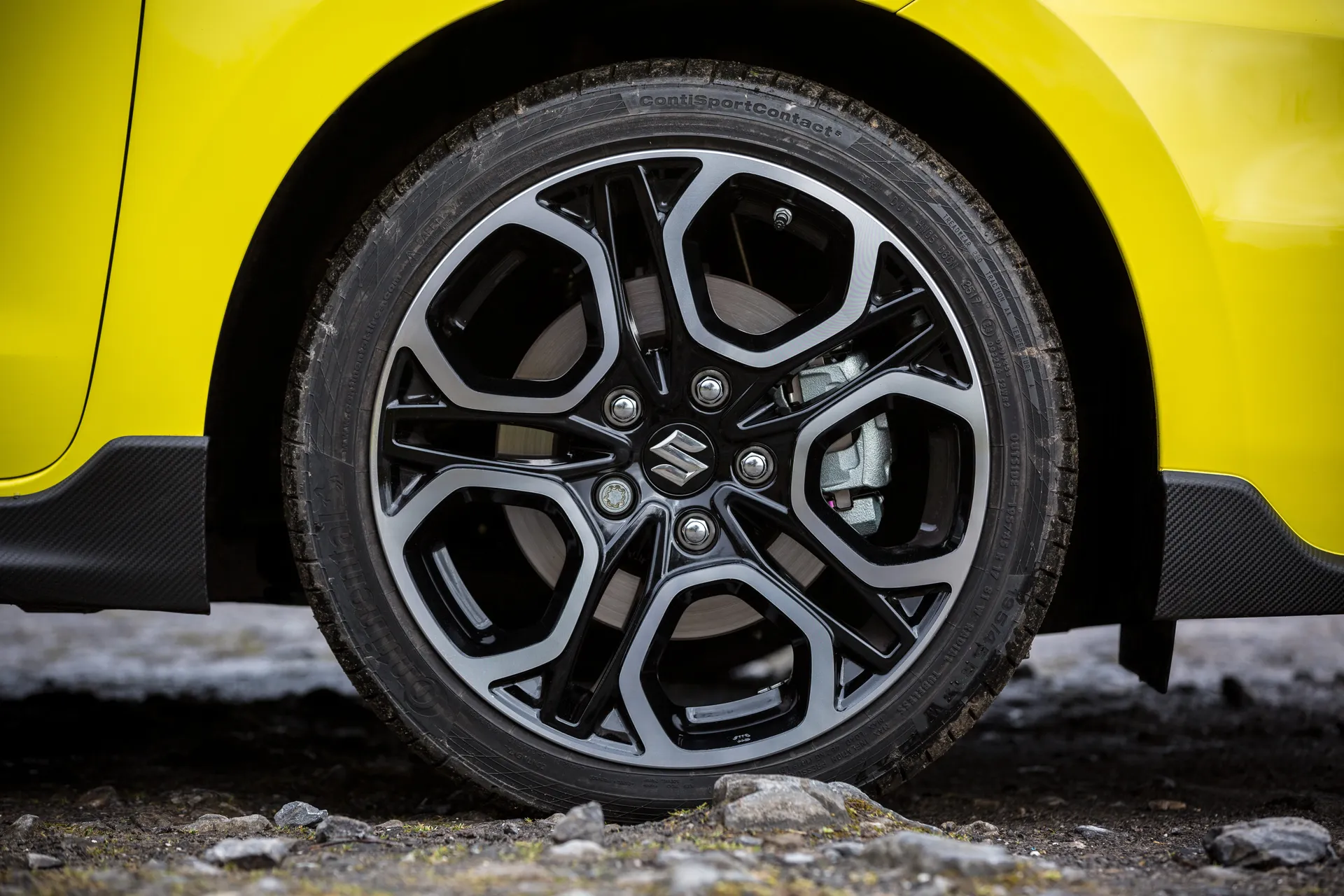
Real MPG figures for the non-hybrid Swift Sport show 44.8mpg versus a claimed economy of 50.4mpg.
Suzuki Swift Sport reliability and warranty
Suzuki offers a three-year warranty with its cars, meaning newer 2024 models will still benefit. Known issues include the alternator not charging the battery, snapping starter generator belts on mild hybrid cars, and side curtain airbag and seatbelt pretensioner issues.
It's worth checking these have been fixed before parting with any cash.
Suzuki Swift Sport insurance groups and costs
Getting insurance cover for the Suzuki Swift Sport could be one of the few ownership hurdles. It sits in group 35 for insurance, which is the same as a Renault Megane R.S. with twice the power output of the Swift.
As a consequence, the Sport may be too pricey for many younger drivers who would otherwise be attracted to a warm hatch.
VED car tax: What is the annual road tax on a Suzuki Swift Sport?
Road tax can be quite confusing if a car straddles two tax systems. Luckily, this isn't the case for the Swift Sport.
Swift Sports built between 24 March 2020 and 31 March 2020 emitted just 106g/km of c02, while 1 April to 31 December 2023 cars emitted 127g/km at most. This means the first year rate sits between £195 and £220, but all cars will default to the new standard £195 afterwards.
Suzuki Swift Sport price
"A Suzuki Swift Sport with the 1.4-litre BoosterJet engine, a 2024 car be yours for £19,000."
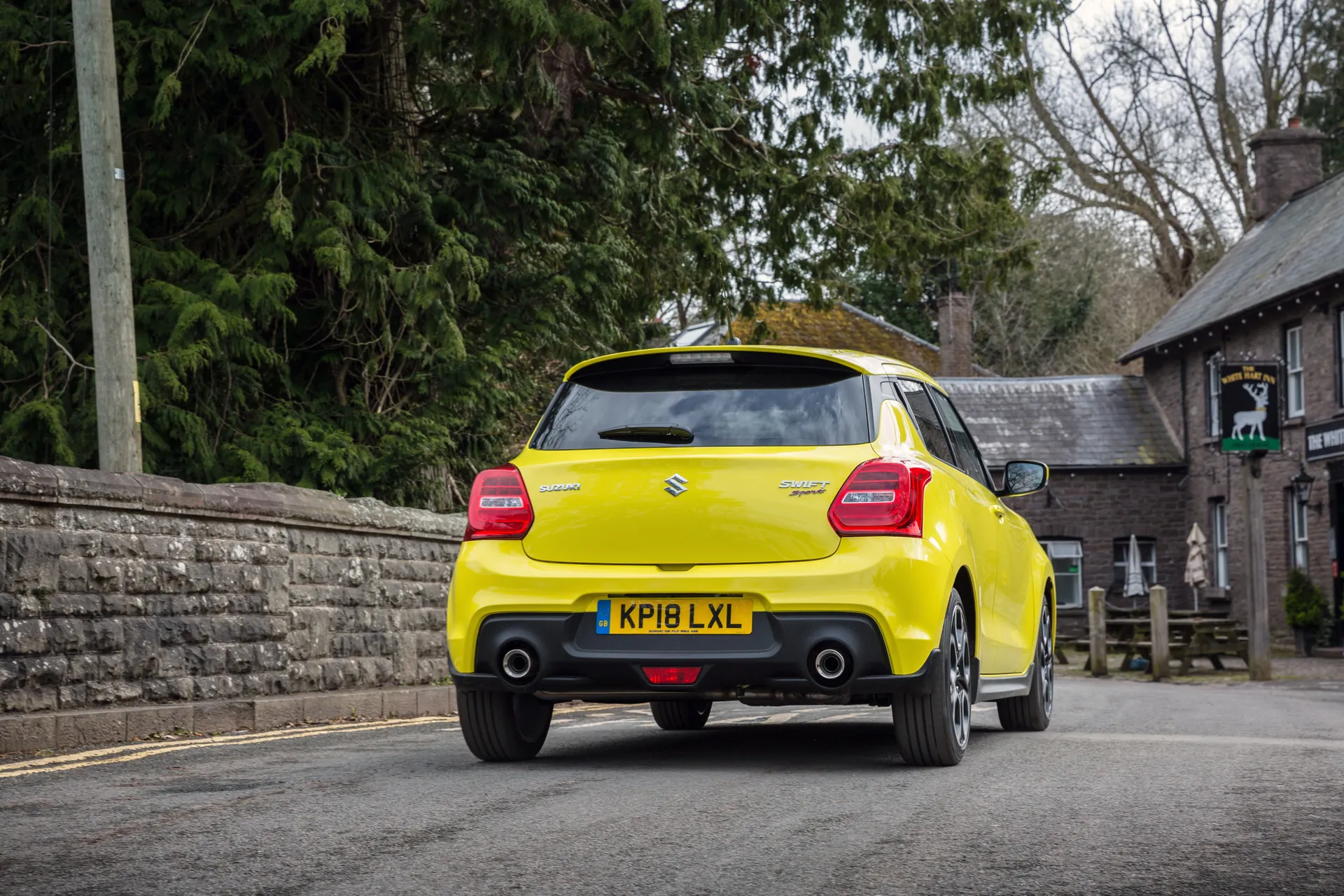
Delivery-mile 2024 cars can be had for just £24,000 while sub 7,000-mile cars are priced from £19,500. Earlier 2020 models with 30,000 miles cost £13,000, while a £10k budget seats you in an even earlier 2018 car with sub-50,000 miles.
Fancy a hybrid? These start at £12,000.
Trim levels and standard equipment
Suzuki only sold the Swift Sport with one trim. This included 17-inch alloy wheels, twin exhausts, rear privacy glass, body kit, and black-painted door pillars as standard. And front and rear parking sensors, reversing camera, and adaptive cruise control.
Inside, you’d find all-round electric windows, keyless ignition, driver’s seat height adjustment, and a 7-inch infotainment screen. Similarly, it had DAB radio, Bluetooth, sat-nav and you could access smartphone apps through Apple CarPlay.
Automatic air conditioning controlled cabin temperature, while heated door mirrors made light work of frosty mornings. You sat on sports front seats with Sport Exclusive upholstery front and rear, and the driver was treated to a leather-bound three-spoke sports steering wheel with remote control buttons for the stereo and cruise control.
Rounding off the Swift Sport’s specification were unique main dials with red edging and a 4.2-inch digital display in the centre for onboard information.
Get our latest advice, news and offers
Keep me updated by email with the latest advice, news and offers from heycar.
By submitting you agree to our privacy policy